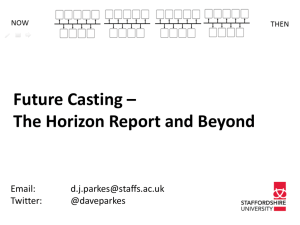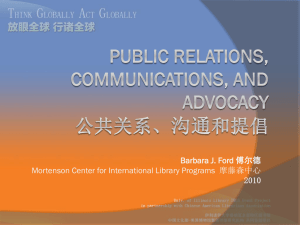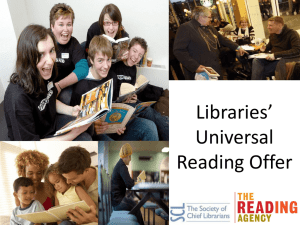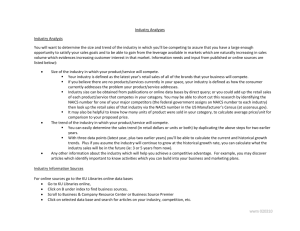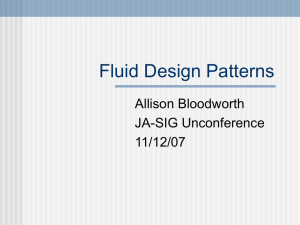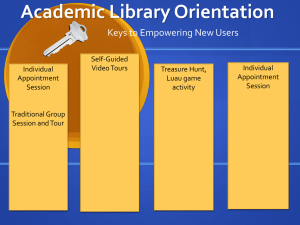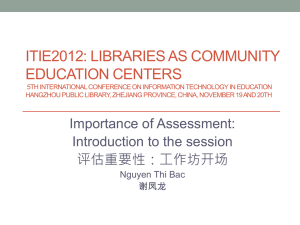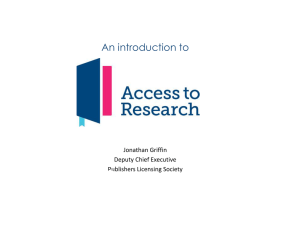AUNILO Future of library & Information Professionals by Lee Cheng
advertisement
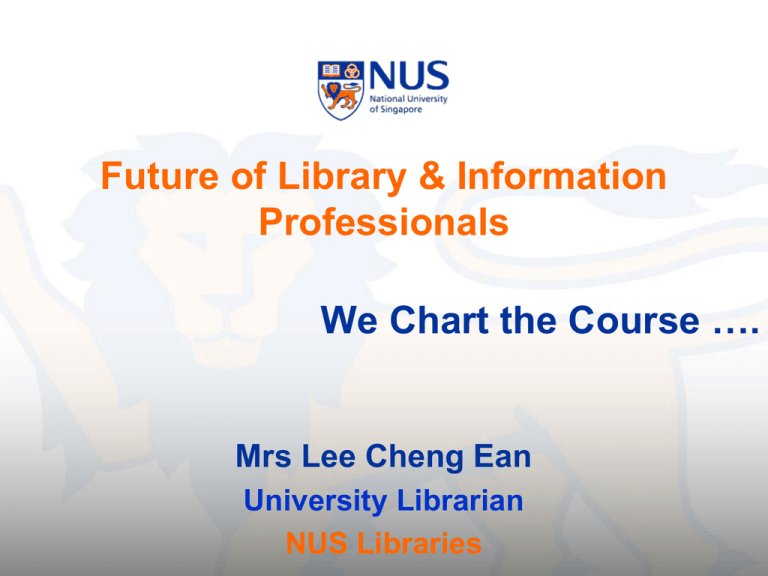
Future of Library & Information Professionals We Chart the Course …. Mrs Lee Cheng Ean University Librarian NUS Libraries Libraries in the education and research ecosystem - scholarly communication Publish findings Publishers sell or license information contents Libraries Users use Information & data 2 What are the key trends accelerating higher education technology adoption? • Trends driving changes over the next one to two years o Growing ubiquity of social media o Integration of online, hybrid, and collaborative learning • Trends driving changes within three to five years o Rise of Data-Driven Learning and Assessment o Shift from Students as Consumers to Students as Creators Source :NMC Horizon Report: 2014 Higher Education Edition http://www.nmc.org/pdf/2014-nmc-horizon-report-he-EN.pdf 3 What are the important developments in educational technology for higher education? Time-to-adoption horizon One Year or Less Two to three years Four to five years • Flipped classroom • • • • Learning analytics 3D printing Games and gamification Quantified self • Virtual assistants Source :NMC Horizon Report: 2014 Higher Education Edition http://www.nmc.org/pdf/2014-nmc-horizon-report-he-EN.pdf 4 Riding the waves or caught in the tide? • IFLA Trend Report launched on 19th Aug 2013 • Highlighted five key trends o New technologies will both expand and limit who has access to information o Online education will democratise and disrupt global learning o The boundaries of privacy and data protection will be redefined o Hyper-connected societies will listen to and empower new voices and groups o The global information economy will be transformed by new technologies 5 Trend # 1 • New technologies will both expand and limit who has access to information o Expanding digital universe higher value on information literacy skills o Users who lack such skills barriers to the vast array of information o New online business models impact access to information 6 Trend # 2 • Online education will democratise and disrupt global learning o Rapid global expansion in online education more learning opportunities increase value on lifelong learning 7 Trend # 5 • The global information economy will be transformed by new technologies o o As new technologies transform the global information economy new generation of digital books, apps, databases, hyper-connected mobile technologies proliferated & redefine privacy & data protection Prevalence of mobile devices have impacted information seeking behaviours 8 Challenges faced by academic libraries • Emerging technologies o Mobile technologies 9 Challenges faced by academic libraries • New Pedagogies o MOOCs and flipped classrooms o Learning by enquiry o Emphasis on creativity – collaborative creative work (makerspaces) o Going beyond the what and why 10 Challenges faced by academic libraries • Economic barriers o o o o o Reduced funding and resources Less purchasing power Publishers not being transparent with business models Prices increasing higher than the rate of the economy Article Processing Charge (APC) to support OA in addition to paying for subscription costs 11 What are the implications? • How do we plan our survival and chart the course? • How do we future proof our libraries and profession? 12 Action plans to future proof our libraries and to make the profession more relevant and important 13 #1 – Focus on learning • • • Blending MOOCs with Adaptive-learning Teacher as resource Agents of change 14 # 2 – Understand evolving scholarly communication • • • From consumers of content producers of content Getting published Open Access 15 NUSL Scholarly Communication Committee 16 # 3 – Communicate value of Libraries • • • Traditional with new innovative services Library as platform, interactive space and place Build connections 17 # 4 – Accelerate development of library professionals • • • • • Invest in staff development Develop new competencies Provide opportunities for knowledge sharing Encourage innovations Be agents of change • • • • • • Observe trends Analyse data Anticipate change and be proactive Be interactive Have conversations with stakeholders Innovate 18 Change mindset Out with the old, In with the new 19 # 5 – Provide access to a responsive collection • Proliferation of online resources convenient and challenging at the same time 20 # 6 - Encourage use • • Encourage use Protect users’ privacy 21 # 7 - Create living Libraries • Create physical and virtual spaces for users to:o o o o Connect collAborate cReate Engage 22 How do we ensure our survival? Link Organizational strategic plans with HR & financial resource plans, Information management, Users’ needs with Competent staff & Transformative leadership


